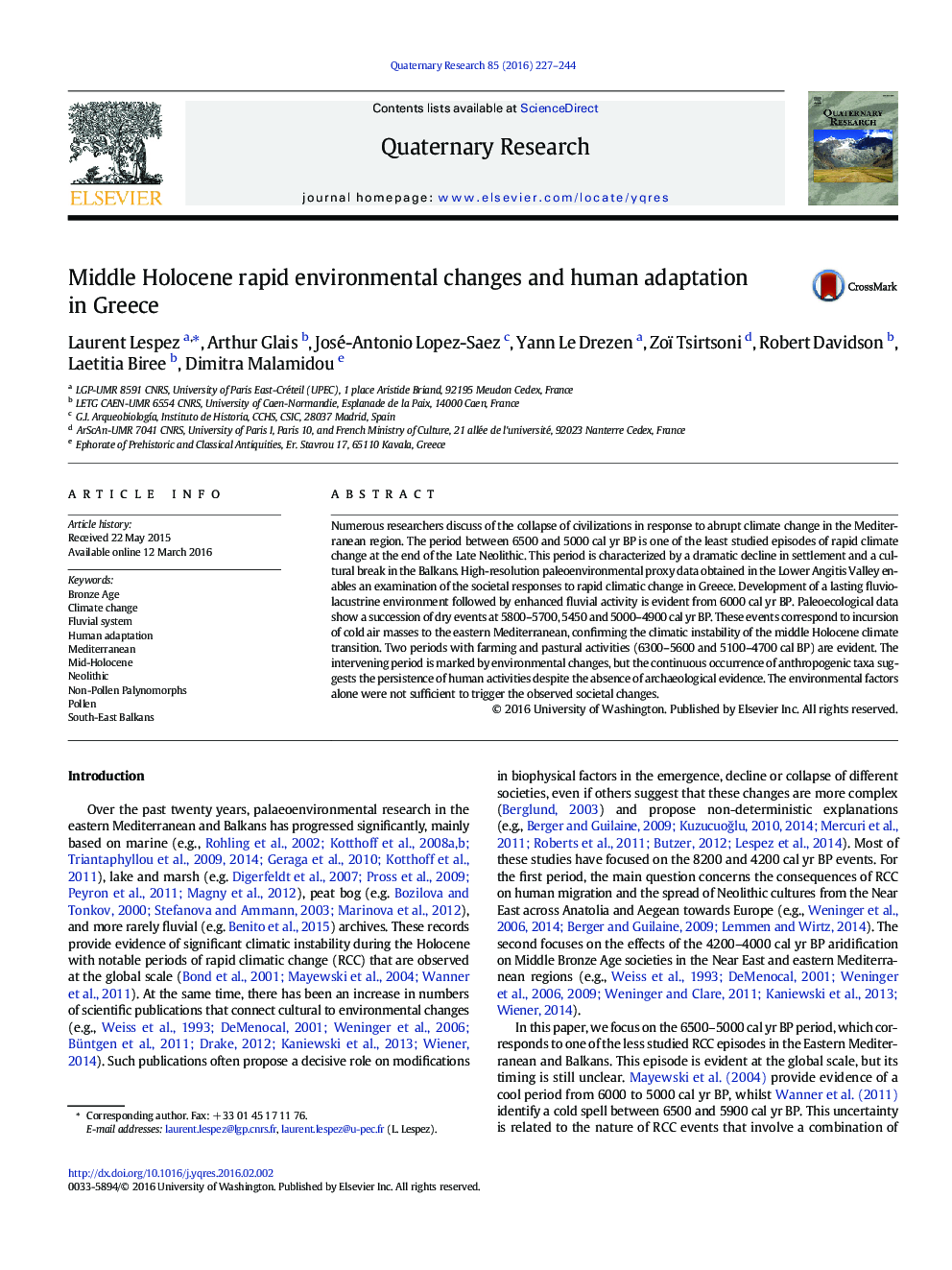| کد مقاله | کد نشریه | سال انتشار | مقاله انگلیسی | نسخه تمام متن |
|---|---|---|---|---|
| 1045060 | 944797 | 2016 | 18 صفحه PDF | دانلود رایگان |
Numerous researchers discuss of the collapse of civilizations in response to abrupt climate change in the Mediterranean region. The period between 6500 and 5000 cal yr BP is one of the least studied episodes of rapid climate change at the end of the Late Neolithic. This period is characterized by a dramatic decline in settlement and a cultural break in the Balkans. High-resolution paleoenvironmental proxy data obtained in the Lower Angitis Valley enables an examination of the societal responses to rapid climatic change in Greece. Development of a lasting fluvio-lacustrine environment followed by enhanced fluvial activity is evident from 6000 cal yr BP. Paleoecological data show a succession of dry events at 5800–5700, 5450 and 5000–4900 cal yr BP. These events correspond to incursion of cold air masses to the eastern Mediterranean, confirming the climatic instability of the middle Holocene climate transition. Two periods with farming and pastural activities (6300–5600 and 5100–4700 cal BP) are evident. The intervening period is marked by environmental changes, but the continuous occurrence of anthropogenic taxa suggests the persistence of human activities despite the absence of archaeological evidence. The environmental factors alone were not sufficient to trigger the observed societal changes.
Journal: Quaternary Research - Volume 85, Issue 2, March 2016, Pages 227–244
